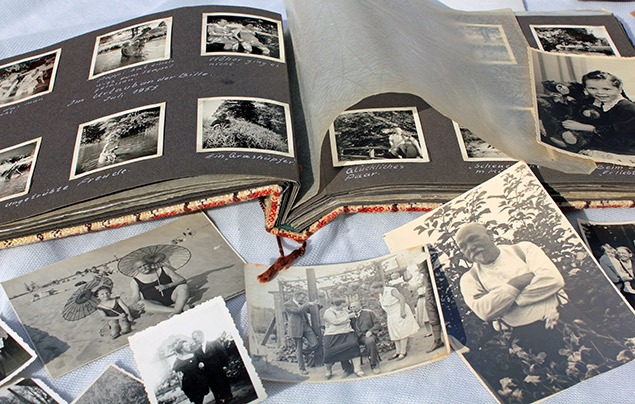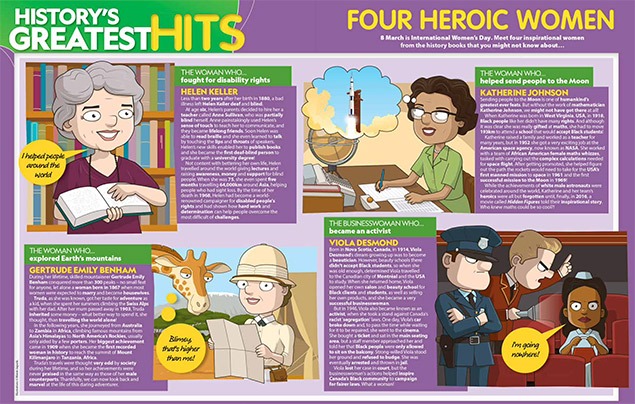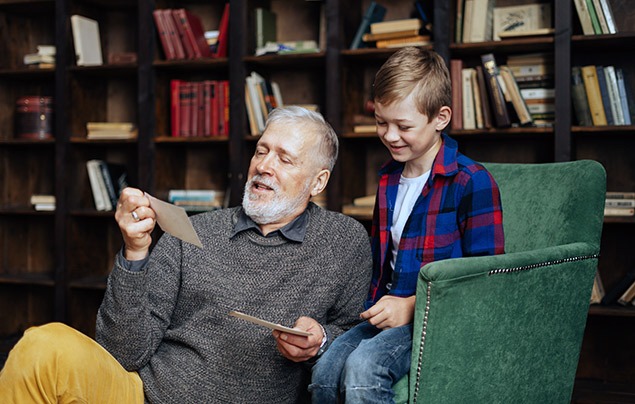Nine ideas to get kids excited about family history
Forget the facts and figures. Here's how to tell stories that your kids will remember forever...
Sharing family history through storytelling is hugely beneficial to kids and families, says author Bruce Feiler, who collected hundreds of life stories for his book Life Is in the Transitions. For one, it gives kids a sense that they’re part of a bigger family narrative.
“Sharing family stories with children lets them know that people around them, people they love, people they view as heroes, also underwent obstacles and overcame them,” he says. “Not just people in books and movies. People in their lives.”
The benefits of knowing your family history
According to research from Emory University, kids with more knowledge of family history have higher self-esteem and self-confidence, fewer behaviour problems and lower levels of anxiety.
That might be because family stories give children a stronger sense of connection and belonging, which boosts their well-being, according to child development expert Elaine Reese, who runs the Story Lab at New Zealand’s University of Otago.
Family stories show children that they’re not alone – and that might help them later in life.
“When these children encounter difficulties, they appear to be better equipped to overcome adversity,” says Reese, who has researched family stories for over 30 years as a professor of developmental psychology in the United States and New Zealand.
“From their bank of family stories, perhaps they’re even able to draw upon a similar experience that happened to someone they know and love.”
Use stories to get them excited
Sparking a kid’s interest in family history is easier than you might think. Children – especially between the ages of 5 and 12 – are primed to listen to fictional stories from their parents.
Real-life family stories are no different. “When they hear some, they usually beg for more, or ask for repeats of favourites,” Reese says.
Good times to tell family stories together are at meals, on walks and rides, and on special occasions like birthdays and holidays. You could even make a family resolution to have specific storytelling sessions.
“Children love to hear their birth stories on their birthday each year,” says Reese, who wrote Tell Me a Story: Sharing Stories to Enrich Your Child’s World. “Although most would prefer you leave out the gory bits!”
And once your kids are hooked on family history? Introduce them to the whole world of history all around us, from the ancient civilisations that shaped our world, to modern Kings, Queens and more!
Spark their love of history right here, at natgeokids.com, or even better, pick up a subscription to National Geographic Kids magazine for amazing tales of history, science, nature and more through your door every month.
9 top story starters
If you don’t have a ready supply of tales from your family history, start creating one. Try these family-tested ideas from the experts…
1. Interview elders.
Encourage children to ask grandparents, parents, aunts, uncles and other relatives about kid-friendly topics, Feiler says. Here are a few to get the ball rolling…
- – What was their favourite childhood toy?
- – Where did they live as a child? What was their home like?
- – How did they meet their spouse?
- – What was the biggest event of their childhood?
If possible, record the interviews to create a video keepsake. Or request written replies to preserve the stories and the handwriting in a scrapbook.
2. Play ‘Whose story is it?’
Reese suggests writing a family history clue on one side of an index card. (For example, This person’s school nickname was Speedy because she could run really fast.) Write the answer on the other side. Take turns reading and guessing, and continue to add index cards as the years go by.
3. Grow a family tree.
Use tools like the National Geographic Kids Guide to Genealogy to create a family tree, showing kids how they’re connected to extended family. Then enhance all the facts and figures with funny or adventurous stories about those relatives that children can engage with.
“The science of human memory tells us the facts and figures – Great-Grandma Adele was born in 1887 – aren’t remembered as well as a story about an actual event from that person’s life, such as the time Great-Grandma’s pony got caught eating sugar cubes in the pantry,” Reese says.
4. Go on an heirloom scavenger hunt.
When kids choose a family treasure on a shelf, wall or attic, an adult then explains its origin story, Feiler says. To keep keepsakes safe, set some rules, like “point but don’t touch,” before unleashing kids on their quest.
5. Build family stories together.
“At the dinner table, start a story about your most recent family holiday,” Reese says. “Each person repeats the previous person’s bit, then adds more to the story: ‘We made the campfire…. We made the campfire and then we made s’mores.’” Parents: You might need to help connect events or create a positive ending.
6. Share relevant stories from your childhood.
For instance, if your child didn’t make the top team in their favourite sport, share how disappointed you were when you got passed over for the top position in something you cared about – then share how the alternative turned out for the better.
“Keep these stories short and dramatic, and avoid preaching,” Reese says.
7. Host an autobiography night.
Feiler suggests turning family dinners into intentional storytelling sessions by having everyone tell a personal story. To keep things low-pressure, ask everyone to prepare a three-minute tale before dinner.
8. Dish out food memories.
While baking or cooking with kids, share bits of family culinary history, such as your favourite foods as a kid, who taught you how to cook and aromas you remember from your grandparent’s kitchen. Here are some top brain foods you could get cooking with.
9. Take a virtual tour (or a real one!)
Use Google Street View for a show-and-tell look at family landmarks, such as your parents’ childhood homes, your school and other faraway historical locations. Or take a trip to see them in person!















LEAVE A COMMENT
THANK YOU
Your comment will be checked and approved shortly.
WELL DONE,
YOUR COMMENT
HAS BEEN ADDED!
COMMENTS
CUSTOMIZE YOUR AVATAR